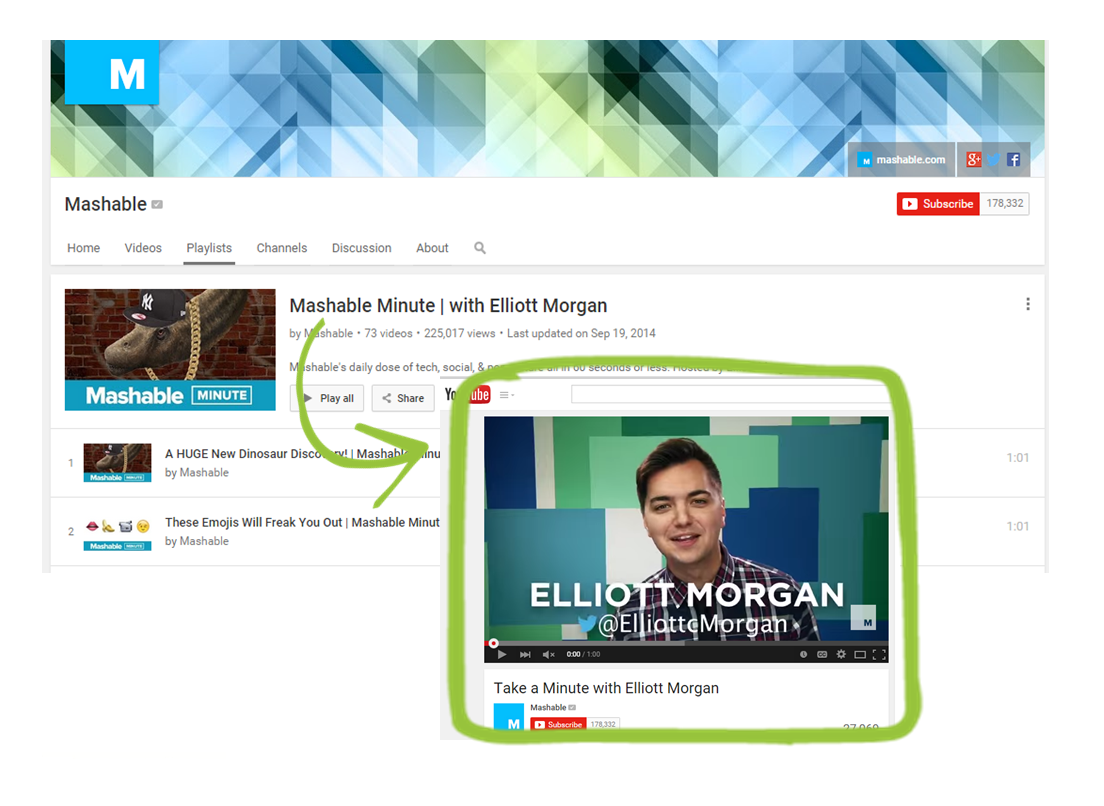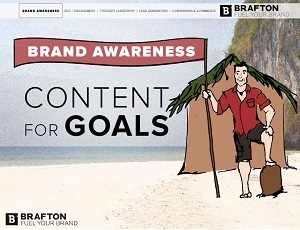Hi, Lauren Kaye with this week’s Content and Coffee. Let’s talk about how a good content writing strategy can help you build brand awareness.
Brand awareness is becoming a bigger priority for marketers. An Experian study found 49 percent of senior marketing leaders say their top challenge is branding, or telling their story to stand out against competitors.
49% of senior marketing leaders say their top challenge is branding, or telling their story to stand out against competitors.
Most recently, the case for brand storytelling has been made ad nauseam. Though some search marketers are quick to point out it’s not the end-all, be-all of marketing, a strong narrative IS central to creating content that’s better than just OK.
This isn’t to say that every piece of content on your site has to be a contrived story just for the sake of assimilating with the marketing mantra du jour. Rather, you should be crafting pieces with a beginning, middle and end that have clear takeaways for readers and use the same style and tone.
Whether you’re working with in-house teammates, freelancers or a content marketing agency, you probably have different contributors creating content for your website. To build brand awareness content on your site, you need to blend these unique and distinct voices into a cohesive narrative that represents your company’s identity.
Here are 3 ways to create content writing that builds a strong identity and increases brand awareness:
1. Create a brand style guide
Get your team together and write a rule book with everything from:
- Phrases that mirror your ideal style (Casual vs. formal, Straightforward or with a certain personality)
- Key language you use to talk about your products
- Font choices (Is there a default that all writers should use?)
- Ideal image choices and preferred color use
- Sentence structure (Short vs. long, Are you willing to break some grammar rules or go strictly by the book?)
- Word choice (Buzzwords to use or avoid, jargon or layman’s terms)
- Sense of humor (Are puns, sarcasm or playful language use acceptable?)
This blog post has more ideas on creating a distinct brand identity through content writing by looking at companies that are very successful in this arena.
Get granular and jot down some sample sentences of how you would want something to sound, and how you wouldn’t want it to sound.
For instance, Wordstream headlines seem to take on the voice of no nonsense Gen X and Y’ers, while a publication like The New Yorker uses headlines such as “Excerpts from philosophers’ breakup letters throughout history” to take a more high-brow route to humor.
2. Start a series with a fun name that’s linked to your brand
The video in this post is a brand awareness play. If someone sees a Content & Coffee, they’ll know it’s from Brafton. (But it’s just one of our series. To see what else we’ve been up to, also check out our Employee Spotlights and Client Success Stories.)
Moz’s Whiteboard Fridays and the Mashable Minute are some other examples. Both series convey an aspect of the brand’s style, approachably instructive and entertaining updates, respectively.
During the process of creating a series, you’ll make decisions about the name, the look of the branding and the approach that will help define your brand for readers or viewers – as well as the people they share it with.
3. Pick a persona
Go through the exercise of picking someone who encapsulates the style and personality you want for your brand – fictional, or a real-life person. Write down those characteristics and share them with anyone who writes for your blog. Use this as a checkpoint when editing to make sure:
- They use the right kind of humor that aligns with your brand image (A lighthearted style vs. sarcastic writing)
- The word choice is cohesive with your other posts (Jargon-heavy vs. approachable everyday language)
- The approach mirrors what readers expect (Leading with stats or research vs. a more narrative style)
With distinct editorial guidelines that reflect your company’s values and identity, you can easily confirm that every piece of marketing content supports the image you’re working hard to convey. By consistently distributing resources that look, sound, feel and smell like your brand, you cement the association of your content with your brand to increase awareness with your audience.
For more information on how content marketing supports brand awareness and what a successful strategy looks like, download our free eBook: Content for Goals – Brand Awareness.
How do you use content writing to make your brand stand out? Drop us questions in the comments section or on Twitter and let us know. Thanks for tuning in – and happy content marketing!







